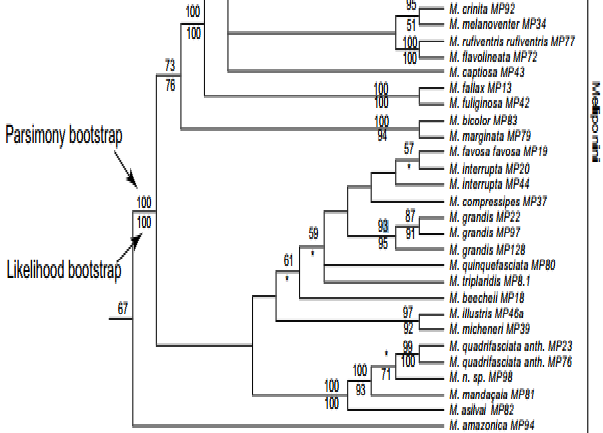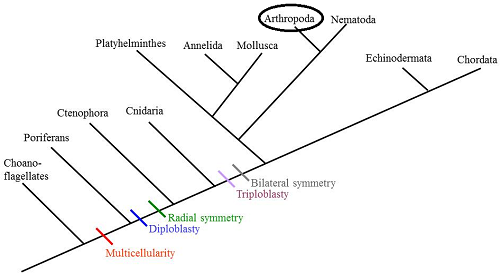
Classification
Domain-Eukarya
Each cell contains organelles and a nucleus.
Kingdom-Animalia
The organism is multicellular, has no cell walls, and is
heterotrophic.
Phylum-Arthropoda
It is a protostome (the mouth forms before the anus) and an
ecydosozoan. It is also triploblastic (it
has bilateral symmetry) with an exoskeleton, segmentation, jointed
legs, and compound eyes.
Class-Insecta
All members have three pairs of legs as an adult, segmented body
(head, thorax, abdomen, and antennae), and have the ability of
flight.
Order-Hymenoptera
All members have two pairs of functional wings with forewings larger
than hindwings with fewer than seven cross veins.
Their antennae usually have ten or more segments and are longer than
their head. Females also have a prominent ovipositor.
This order also includes wasps like the
Polister dominula wasp, sawflies, and ants like the
army ant,
honey pot ant and
meat
ant.
Family-Apidae
The adults are short and stout. They are fuzzier than their
relatives with straight antennae. In addition, they are usually
yellow and black striped, some are bright green or all black and
most can sting. Their larvae and pupae are never found outside the
nest. The larvae have soft white bodies, no legs, and brown heads.
Their queens are larger than members of their colony, the workers
are smallest, and the male drones are medium sized. This genus also
includes cuckoo,
carpenter, digger, bumble, and honey bees.
Genus-Melipona
All members are small stingless bees that make honey.
Species-Melipona beecheii
Also called the “xunan-kab” bee, which literally translates to “the
royal lady bee.”To learn more about this species please explore the
rest of the website by clicking on the other links to the left.
Phylogenetic trees

This molecular phylogenetic tree shows the relationship among the members of the Melipona genus. The numbers spread out among the tree represent the time of divergence in millions of years. Each asterisk denotes an unavailable value for that divergence. By parsimony bootsrap the tree indicates the most simplest explanation for the relationships among Melipona.

This phylogenetic tree organizes the 11 phyla of the kingdom Animalia are evolutionarily related. Melipona beecheii fits into Arthropoda (circled).